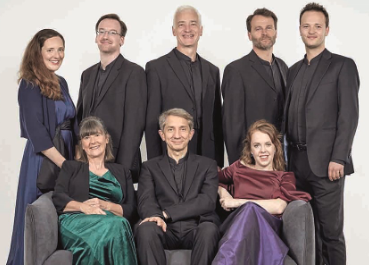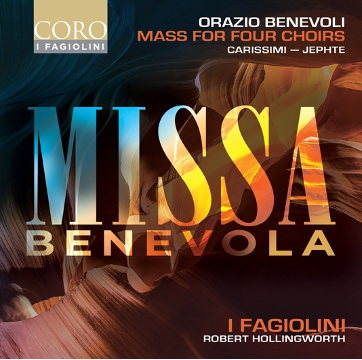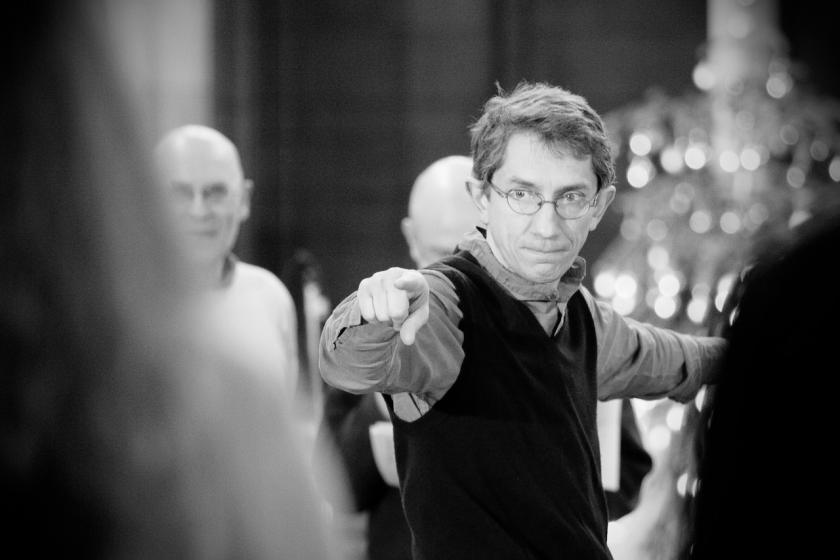I’m sitting in a café in Kraców, Poland, rehearsals finished for the resurrection of a mass setting written nearly 400 years ago in Rome. Nothing particularly odd about this except that the virtually unknown composer – Orazio Benevoli, master of the Colossal Baroque – split his choir into four separate groups and wrote them a kind of sonic doubles match, the music jumping from choir to choir around the heads of the listener until it comes together in life-affirming surround-sound cadences that allow you to experience something brilliant but ephemeral - and quite indescribable: in 17th century terms, something of the divine.
Benevoli was by no means the first to have a go at this. Cori spezzati (“split-choir”) or polychoral music was all the rage up the road in Venice in the late 16th century – with an emphasis on virtuosity and instrumental colour – cornetts, sackbuts, dulcians: music as power. Its humbler starting point two generations before that seems to have been the service of Vespers where psalms were chanted by different groups (in England, different sides of the choir: “Dec and Can”) coming together in the closing Gloria – or in early 16th century music where two small four-part choirs combined into a brief but flashier eight-part finale.
 The first true master of this choral stereo was Orlandus Lassus whose infinitely subtle choral entwinings reflected the physical closeness of his two groups: with balconies very close together his choirs could do more than just hit the ball back across the net but combine in ever-more ingenious ways: try his eight-voice “Alma redemptoris mater”.
The first true master of this choral stereo was Orlandus Lassus whose infinitely subtle choral entwinings reflected the physical closeness of his two groups: with balconies very close together his choirs could do more than just hit the ball back across the net but combine in ever-more ingenious ways: try his eight-voice “Alma redemptoris mater”.
But in the same way that building a slightly bigger tower than your neighbour got out of hand in the 15th century (search “San Gimignano”), composing for an ensemble of even more choirs quickly became a thing. The surviving monolith of the 16th century is the motet and mass for 40 voices (five choirs of eight lines each) by Alessandro Striggio (which I had the pleasure of recording in 2011), intended as a bribe for Emperor Maximilian II in the 1560s. Striggio took the music to Munich and Paris where he gave notable performances with rather surprised local musicians and even – it’s thought - to London. There – if a single piece of scrappy evidence is to be believed – it so inspired Thomas Tallis that he wrote his own 40-voice motet, “Spem in alium”. That extraordinary one-off work of genius had no obvious successors and may never even have been performed in public in Tallis’ lifetime, despite the huge affection (and terror) with which it is now frequently attempted.
Can you actually hear (and follow) 40 different parts? Well, no! Apparently seven different is the most we are manage (as a singer once helpfully told me just as I was about to conduct “Spem”) but that’s what is so clever about the apparent ‘reduced’ forces (16 instead of 40) of our Roman discovery, Benevoli. He knew what worked as opposed to what looked good on the page. His light touch creates a four-layered musical soufflé whose flavours attack the palette individually before kaleidoscopically combining in an explosion of flavours (that gum in Charlie and the Chocolate Factory) when the sound of all sixteen parts take over your entire body.
Kyrie II from the Missa Benevola
What’s it like to take part in? For the conductor it’s the best seat in the house but there is an element of the Mickey Mouse, dancing around to catch each choir at the right moment, giving them the confidence to come in when they can’t really hear enough of the detail around them to know how it’s going. In 17th century performances a main conductor stood by choir 1 giving a metronomical beat with a rolled up piece of paper. This was relayed by sub-conductors standing with the other choirs, as at the recent Coronation in Westminster Abbey, maestro Pappano using the helpful video camera to his keep his out-of-sight orchestra together with the choir. With Benevoli’s masses, each singer only had their own part - plus a large dose of adrenaline. Rehearsal was minimal and a musical visitor from France was astounded at the technique’s success.
One peculiar feature of this music is a technique called “holding the mule”. In this case the mule is a stubbornly slow-moving tune sung in unison by the sopranos of the four choirs, around the heads of the congregation. The name was presumably inspired by the familiar sight of a priest stuck on a static mule in the streets of Rome, the priest vainly urging it on. But the sopranos’ loss (no-one enjoys singing slow) is the composer’s gain, allowing fast-moving music for the parts underneath. Handel came to Rome only 30 years after Benevoli’s death and was clearly taken with the technique, including it in his Dixit Dominus and also in Messiah – “King of kings”/ “halleluiah, halleluiah”…)
 What made these performances even more astounding were the super-special occasions when choirs were doubled up: eight groups instead of four and spread even further down the church, the problems of ensemble multiplying and requiring absolute balls of steel from those taking part. It was known to work, although one can imagine performances when it didn’t…
What made these performances even more astounding were the super-special occasions when choirs were doubled up: eight groups instead of four and spread even further down the church, the problems of ensemble multiplying and requiring absolute balls of steel from those taking part. It was known to work, although one can imagine performances when it didn’t…
Tonight a unique Colossal Baroque performance will take place at St Martin-in-the-Fields, to mark the launch of I Fagiolini’s world premiere recording of Benevoli’s four-choir “Benevola” mass: with the deluxe model four doubling, eight in all. I Fagiolini will provide the primaries while secondaries are sung by St Martin’s Choral Scholars and The Lyons Mouth. And a composer who lived in poverty and was completely forgotten will rise again, mules and all.















Add comment